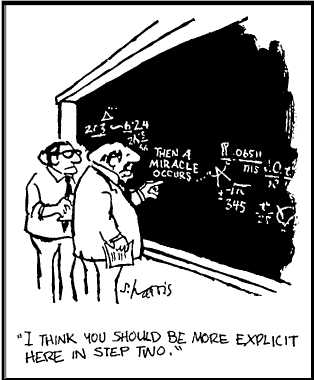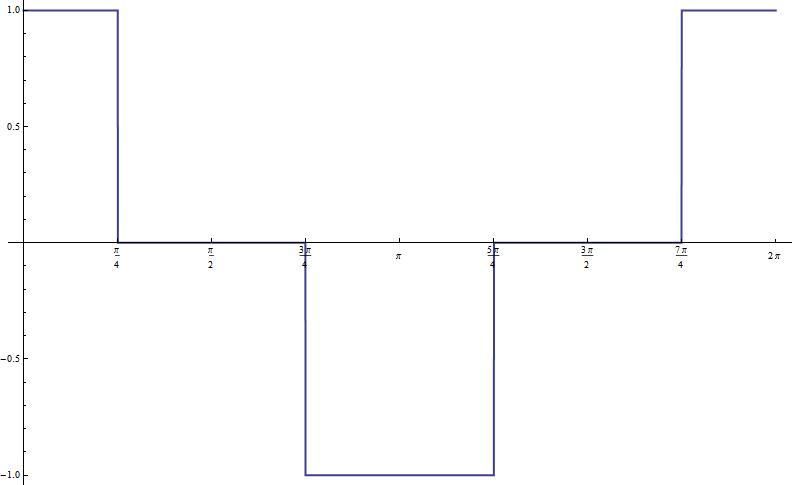minkwe wrote:Jochen wrote:You never obtain correlations from a single system; you get a single outcome from a single system. Correlations are statistical quantities, and hence, obtained by re-measuring identically prepared systems.
Huh?

Just more double-talk
Jochen wrote:No. I've told you the QM predictions for
a two-particle system in the state )
, and the
QM predictions for a four-particle system in the state \otimes\frac{1}{\sqrt{2}}(|\uparrow_C\downarrow_D\rangle - |\downarrow_C\uparrow_D\rangle))
. These are different systems; they produce different predictions.
You need to eat your own dog food!
I'm not sure what's your issue here if you insist on being cryptic. Are you confused that I speak about statistical predictions for a single system, while insisting that they can't be checked on a single system? If so, this is again just basic QM: since it's a statistical theory, it only makes statistical predictions, i.e. expectation values or probabilities. So, for a system in some state

, the most we can say about an observable O is its expectation value

, but not what any given measurement will produce (in the general case). We can also not use the same system to make a large enough number of measurements to estimate the statistical properties, since after a measurement of O, the system will be in an eigenstate of O (this is the so-called collapse postulate), and hence, every further measurement will just again yield the same observed value for O. Hence, we need a large number of copies of the system in the state

in order to estimate

. Does this help?
minkwe wrote:Nope. The QM predictions are for independent systems, the measurements are performed on 4 independent disjoint sets of particle pairs. The QM predictions are for

The predictions of QM are for a system in some given state

. In order to check these predictions, since they are of a statistical sort, a large number of systems in that state are needed; the observations made on this ensemble will approximate the QM prediction in the limit of infinitely many measurements.
Have you read and understood Adenier's paper yet?
No matter where your error comes from, it remains an error all the same (and the fact that it's apparently been submitted to J. Math. Phys. but wasn't accepted isn't exactly encouraging either). Make your own argument, but don't expect me to review everything that you could dig up and throw in my way.
minkwe wrote:1. Do you agree that the reason the trivial mathematical inequality
 + A_i(B_i-D_i) \leq 2) for 4 measurements measurements
for 4 measurements measurements  on a single particle pair can be extended to averages, is precisely because the prescribed factorization is possible for every row in the series of 4xN outcomes from N particle pairs?
on a single particle pair can be extended to averages, is precisely because the prescribed factorization is possible for every row in the series of 4xN outcomes from N particle pairs?
No, the inequality can be extended to averages because no average of a set of values can't be greater than the maximum value of that set. So you have a set of values, all below two, and immediately you know that the average value will also be below two.
minkwe wrote:3. Do you agree that for 4
independent particle pairs

, the expression

is false, and the correct upper bound should be  , and by the same logic of the argument in point (1) above, the correct upper bound for averages is
, and by the same logic of the argument in point (1) above, the correct upper bound for averages is 
For independent particle pairs, it is indeed the case that they are not bound by the value 2, but from there, it does not follow that hence,

. The observed measurement outcomes are drawn from the same probability distribution, and (as you know) from that fact alone the CHSH bound of two follows.
Consider two independent dice, together with the observables T=value on top of the die after a throw, and B=value on the bottom after a throw. For each throw of a single die, then B + T = 7. This also holds in the average:

. But for a single throw of both, the value on top of one plus the value at the bottom of the other is not 7, but bounded above by 12. So if you keep throwing both die, and record the value on top of one, and the value at the bottom of the other, does it then follow that

? (Hint: the answer is no.)
Since your argumentation breaks down here, there's no point in adressing the rest. If you understand why

, then you'll also understand why

.




